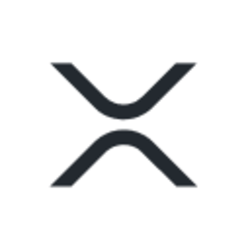-
Mercado Bitcoin is spearheading a financial revolution by tokenizing over $200 million in real-world assets on the XRP Ledger, bridging traditional finance with blockchain innovation.
-
This initiative enhances liquidity, democratizes access to high-value investments, and leverages the XRP Ledger’s speed and low costs to transform asset trading globally.
-
According to COINOTAG, “Mercado Bitcoin’s strategic use of the XRP Ledger sets a new standard for scalable and efficient real-world asset tokenization in Latin America.”
Mercado Bitcoin’s $200M real-world asset tokenization on XRP Ledger boosts liquidity, accessibility, and transparency, marking a new era in digital asset investment.
Mercado Bitcoin’s Strategic Tokenization of Real-World Assets on the XRP Ledger
Mercado Bitcoin, a leading Latin American cryptocurrency exchange, is pioneering the tokenization of real-world assets (RWAs) valued at over $200 million on the XRP Ledger (XRPL). This initiative exemplifies a significant shift in the financial landscape, where traditional assets such as stocks, bonds, and real estate are digitized into blockchain tokens. By doing so, Mercado Bitcoin is unlocking unprecedented liquidity and accessibility for investors worldwide. The XRP Ledger’s fast transaction speeds and minimal fees make it an optimal platform for handling the complexities of large-scale asset tokenization, ensuring efficient and secure trading.
Understanding Real-World Asset Tokenization and Its Financial Implications
Tokenization converts ownership rights of tangible assets into digital tokens on a blockchain, enabling fractional ownership and 24/7 global trading. This process addresses several limitations of traditional finance, including restricted liquidity and high entry barriers. Mercado Bitcoin’s experience, having already tokenized assets worth over 1 billion Brazilian reais, demonstrates the practical viability of this approach. Investors benefit from enhanced transparency through immutable blockchain records and reduced transaction costs by eliminating intermediaries. This democratization of investment opportunities fosters a more inclusive financial ecosystem.
Why the XRP Ledger is the Ideal Infrastructure for Tokenizing Real-World Assets
The XRP Ledger’s architecture offers distinct advantages that align perfectly with the demands of RWA tokenization. Its consensus protocol enables transaction finality within seconds, a critical feature for high-frequency trading environments. Additionally, the XRPL’s built-in decentralized exchange facilitates seamless peer-to-peer trading of tokenized assets without relying on centralized intermediaries. Low transaction fees further enhance economic efficiency, making micro-transactions and fractional ownership feasible. Mercado Bitcoin’s choice of XRPL underscores the importance of scalability, security, and institutional readiness in deploying blockchain solutions for traditional finance integration.
Impacts on Investment Accessibility and Global Liquidity
Tokenization on the XRP Ledger significantly lowers barriers to entry by allowing fractional ownership of high-value assets, previously accessible only to accredited investors. This opens new avenues for retail investors to diversify portfolios with assets like real estate and corporate bonds. Moreover, the borderless nature of blockchain trading extends market reach beyond geographical constraints, increasing liquidity and enabling continuous price discovery. These developments could reshape capital markets by introducing a more dynamic and inclusive investment environment.
Regulatory Considerations and the Path Forward for RWA Tokenization
While technological infrastructure is crucial, regulatory compliance remains a pivotal factor in the mainstream adoption of tokenized assets. Mercado Bitcoin’s adherence to Brazilian securities laws, including KYC and AML protocols, exemplifies responsible integration within existing frameworks. The evolving regulatory landscape demands collaboration between blockchain innovators and policymakers to establish clear guidelines for issuance, trading, and taxation of tokenized securities. This cooperation is essential to mitigate risks and build investor confidence, ultimately fostering sustainable growth in the digital asset sector.
Future Opportunities for Stakeholders in the Tokenized Asset Ecosystem
Investors can capitalize on diversified portfolios with enhanced liquidity and transparency, while asset owners gain access to global capital markets and improved asset management capabilities. Developers and blockchain professionals are presented with fertile ground for innovation, creating new financial products and compliance solutions tailored to tokenized assets. Mercado Bitcoin’s initiative signals a transformative moment, encouraging stakeholders to engage proactively with this emerging paradigm.
Conclusion
Mercado Bitcoin’s ambitious $200 million real-world asset tokenization on the XRP Ledger marks a pivotal advancement in digital finance. By merging traditional assets with blockchain technology, this initiative enhances liquidity, democratizes investment access, and sets a benchmark for secure, efficient asset trading. As regulatory frameworks evolve and technological capabilities expand, tokenization is poised to redefine global financial markets, offering inclusive and transparent investment opportunities for a diverse range of participants.
